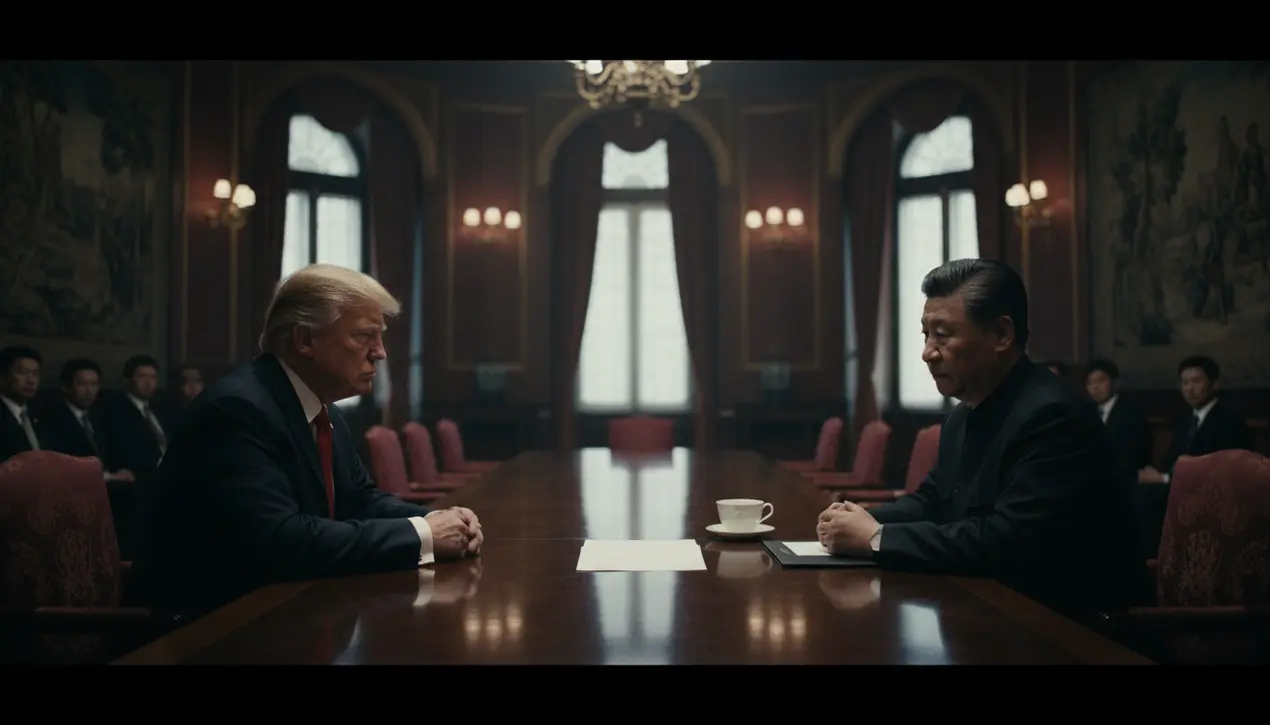
PoliticsdiplomacyDiplomatic Visits
Trump says he'll visit China in April.
RO
Robert Hayes
1 day ago7 min read4 comments
In a move that underscores the delicate and perpetually high-stakes nature of modern great-power diplomacy, President Donald Trump has confirmed his acceptance of an invitation from Chinese President Xi Jinping for an official visit to Beijing this coming April, with a reciprocal state visit for the Chinese leader tentatively slated for 2026. This diplomatic choreography, while framed as a continuation of dialogue, is fraught with the immense weight of historical precedent and the ever-present specter of geopolitical friction.The announcement follows last month's fragile trade truce, a temporary ceasefire in a long-running economic conflict that has seen tariffs weaponized and supply chains weaponized, recalling not the grand economic conferences of the post-war era, but the tense, calculated standoffs of the Cold War. Both leaders have a vested, albeit precarious, interest in maintaining a semblance of equilibrium; for Trump, it is the appearance of securing favorable deals for the American industrial and agricultural base, a key pillar of his political brand, while for Xi, it is the crucial need to stabilize a Chinese economy facing significant headwinds without appearing to capitulate to foreign pressure.However, beneath this veneer of transactional diplomacy simmers the unresolved, and arguably most dangerous, flashpoint: Taiwan. President Xi has markedly intensified his rhetoric regarding the 'reunification' with the self-governing island, a red line for Beijing that treats the One-China principle as an inviolable article of faith, much like the Monroe Doctrine was for a rising United States in the 19th century.Any discussion of Taiwan immediately elevates the stakes from economic competition to the realm of core national security and strategic primacy in the Indo-Pacific. Furthermore, the devil, as always, resides in the details left unresolved by the broad-stroke trade truce.Contentious disputes over China's dominance in critical minerals and the ongoing technological war, particularly surrounding advanced semiconductor chips and export controls, remain potent sources of leverage and potential conflict. These are not merely trade issues; they are the foundational elements of 21st-century economic and military power.When the leaders of the world's two largest economies meet, the agenda is never singular. It is a complex tapestry woven with threads of mutual economic dependency, fierce technological rivalry, and deep-seated ideological and military distrust.The outcomes of these summits—whether they yield tangible agreements or simply manage to avoid a catastrophic rupture—echo through global markets, shift alliance structures, and set the tone for international stability for years to come. The world will be watching this April not for the signing ceremonies, but for the subtleties in the body language and the unspoken tensions in the communiqués, searching for clues to the future trajectory of this defining relationship of our era.
#Donald Trump
#Xi Jinping
#US-China relations
#diplomatic visit
#trade truce
#Taiwan
#featured
Stay Informed. Act Smarter.
Get weekly highlights, major headlines, and expert insights — then put your knowledge to work in our live prediction markets.
Related News
Comments
Loading comments...
© 2025 Outpoll Service LTD. All rights reserved.